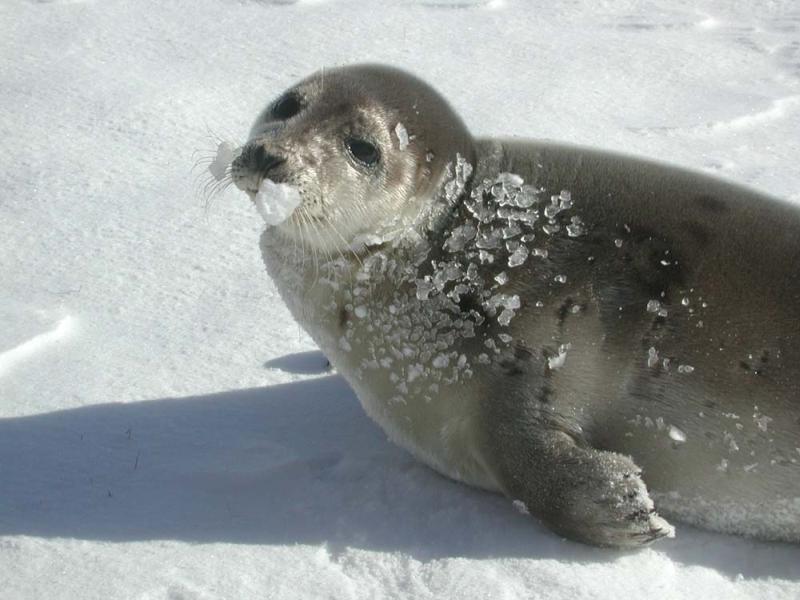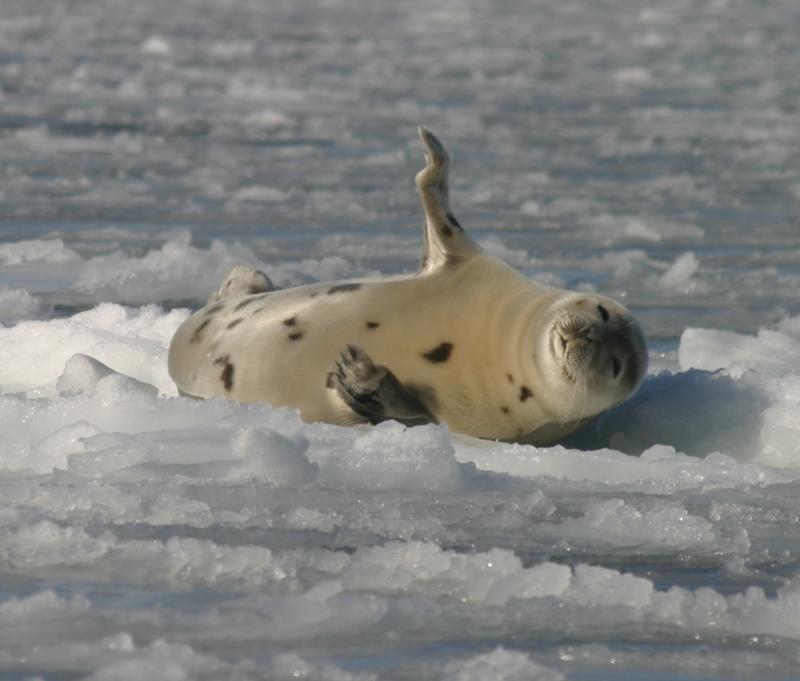Wildlife North America . com North American Animals - mamals, birds, reptiles, insects |
Harp Seal (Phoca groenlandica)
This is a young Harp Seal being checked out by staff from Allied Whale, College of the Atlantic. Allied Whale rescues stranded marine mammals. Photograph copyright: Rosemary Seton, Allied Whale, College of the Atlantic - all rights reserved. Used with permission. (view image details) 
young Harp Seal on the ice. Photograph copyright: Mindy Viechnicki, Allied Whale, College of the Atlantic - all rights reserved. Used with permission. (view image details)
HARP SEAL FACTS
DescriptionHarp Seals are from the Arctic Atlantic. The male Harp Seal is silver grey with black head, and a black harp-shaped (or horseshoe shape) on the back. Females are paler with less distinct markings. They shed their coats in April/May. They swim together in large groups and can be seen leaping and rolling in the water. Other Names Greenland Seal, Saddle-backed Seal Size 1.7m - 1.9m Environment Harp Seals are found in the open sea on the edge of the pack ice. They maintain natural holes in the ice 60-90 cm in diameter for access to water and breathing Food fish, and on crabs and other invertebrates Breeding One pup (sometimes twins) is born after a gestation of 11.5 months. The pup weighs about 10 kg at birth and is suckled for about 12 days, putting on around 2kg weight per day. Range Arctic Atlantic from Berents Sea to Greenland and Newfoundland Notes Commercial hunting Harp Seals has been in the news for a number of years as a conservation and environment issue. The following note is from Wikipedia article on Seal Hunting:- The commercial hunting of infant harp seals (whitecoats) and infant hooded seals (bluebacks) was banned in Canada in 1987 under pressure from animal rights groups. Now, seals may only be killed legally once they have started moulting (from 12 to 15 days of age for harp seals), as this coincides with the time when they are abandoned by their mothers. These pups, who have not yet completely molted, are known as "ragged-jackets". Once the pups have completely molted, they are called "beaters". Classification
Relatives in same Genus Ribbon Seal (P. fasciata) Ringed Seal (P. hispida) Spotted Seal (P. largha) Harbor Seal (P. vitulina) Home | Mammals | Reptiles | Birds | Insects | Privacy Policy | Disclaimer | Contact Us |